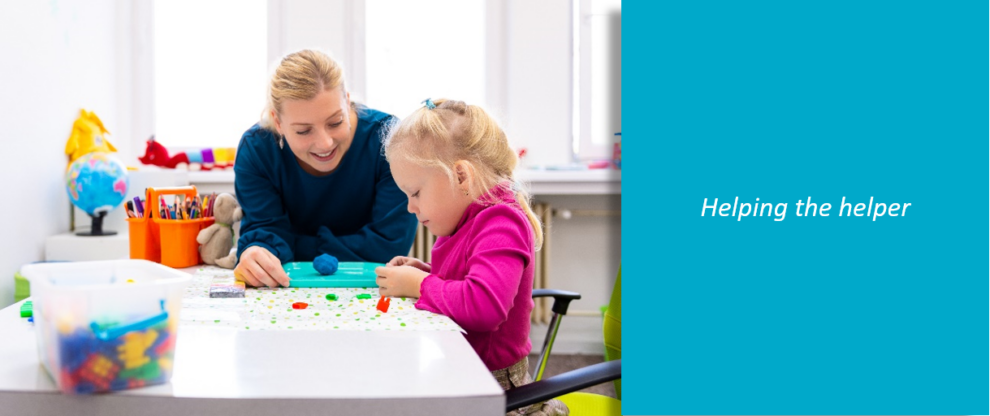
Clinical Supervision of Play and Creative Arts Therapists is a specialised form of supervision that focuses on providing guidance and support to therapists who work with clients, particularly children, using play and creative arts-based approaches in their therapeutic practice.
The supervision process is tailored to the unique aspects of these expressive modalities, which allow clients to communicate and process their emotions and life experiences through various forms of play, art, sand, music, drama, and other creative activities.
Following are some of the key aspects of clinical supervision of play and creative arts therapists:
- Specialised expertise: Supervisors in this field are experienced and knowledgeable in play and creative arts therapies. They possess a deep understanding of the therapeutic techniques and interventions used in these modalities, and are skilled in interpreting and responding to clients’ expressions through play and creative activities.
- Skill development: The primary focus of supervision is to help therapists enhance their therapeutic skills and effectiveness with their clients. Supervisors provide feedback, guidance, and constructive critique, helping therapists deepen their understanding of their clients’ play or creative expressions and refine their interventions accordingly.
- Reflective practice: Supervision encourages therapists to engage in ongoing self-reflection and examination of their therapeutic work. Therapists discuss their cases with their supervisor, exploring their feelings, reactions, and countertransference during sessions. This reflective process enhances therapists’ self-awareness and promotes continuous professional growth.
- Case conceptualisation: Supervisors assist therapists in developing a comprehensive understanding of their clients’ issues, needs, and therapeutic goals. They help therapists identify patterns and themes in their clients’ play or creative expressions, and provide insights in to the underlying psychological dynamics at play.
- Ethical considerations: Play and creative arts therapists encounter unique ethical dilemmas, particularly when working with children who may have limited verbal expression. Supervision addresses these ethical complexities, helping therapists navigate issues related to confidentiality, boundaries, and informed consent, ensuring the well-being of their clients.
- Support and self-care: Therapists may encounter challenging cases of emotionally intense sessions while working with children. Supervision provides a safe and supportive environment for therapists to process their feelings, share experiences, and receive validation and encouragement from their supervisor. Supervision also emphasises the importance of self-care to prevent burnout and maintain the therapist’s well-being.
- Professional development: Supervision is an essential aspect of ongoing professional development for play and creative arts therapists. It keeps therapists up-to-date with the latest research, best practices, and advancement in the field, enhancing the quality of their therapeutic work.
Supervision can take various formats, such as individual, group or peer supervision. The frequency and duration of supervision may vary based on the therapist’s experience, caseload, and professional requirements.
I offer creative supervision to therapists in my practice, which means that along with exploring client work through verbally sharing information, we also incorporate creative techniques, such as visualisation, drawing, sandplay and role-play. Creative exercises help the therapist engage their ‘right-brain’ and allow them to tap in to new, unconscious information from their therapeutic sessions, often the non-verbalized aspects of the therapeutic relationship and process. This information is usually stored as images, symbols and emotions, and accessing it through creative expression allows for a deeper exploration of emotions, thoughts and dynamics at play. In turn the therapist gains deeper insights in to their clients, which allows them to better understand and refine their therapeutic work.
Here is a breakdown of how each creative technique can be beneficial in supervision:
- Visualisation: Visualisations can help therapists tap into their imaginative and intuitive capacities. It allows them to step into their client’s shoes, gain a different perspective, and understand the client’s experience at a deeper level.
- Drawing: Drawing can be a powerful tool to externalise thoughts and emotions that are difficult for the therapist to express verbally. It provides a visual representation of the client’s experience and can reveal aspects that might not have been readily apparent through conversation alone.
- Sandplay: Sandplay is a valuable medium to access subconscious thoughts and feelings. Therapists can use miniature objects and symbols to represent various aspects of the client’s world, facilitating a deeper exploration of the client’s inner landscape and their relationships.
- Role-play: Role-play allows therapists to embody different perspectives within the therapeutic relationship. It can help them understand the client’s experience from various angles and experiment with different therapeutic approaches or interventions.
By utilising these creative techniques within the supervision work, therapists can enhance their ability to connect with their clients on a deeper level and gain fresh insights into the therapeutic process. It also encourages therapist to think outside the traditional verbal framework and engage with their own creativity and intuition, ultimately enriching their therapeutic skills and outcomes.
